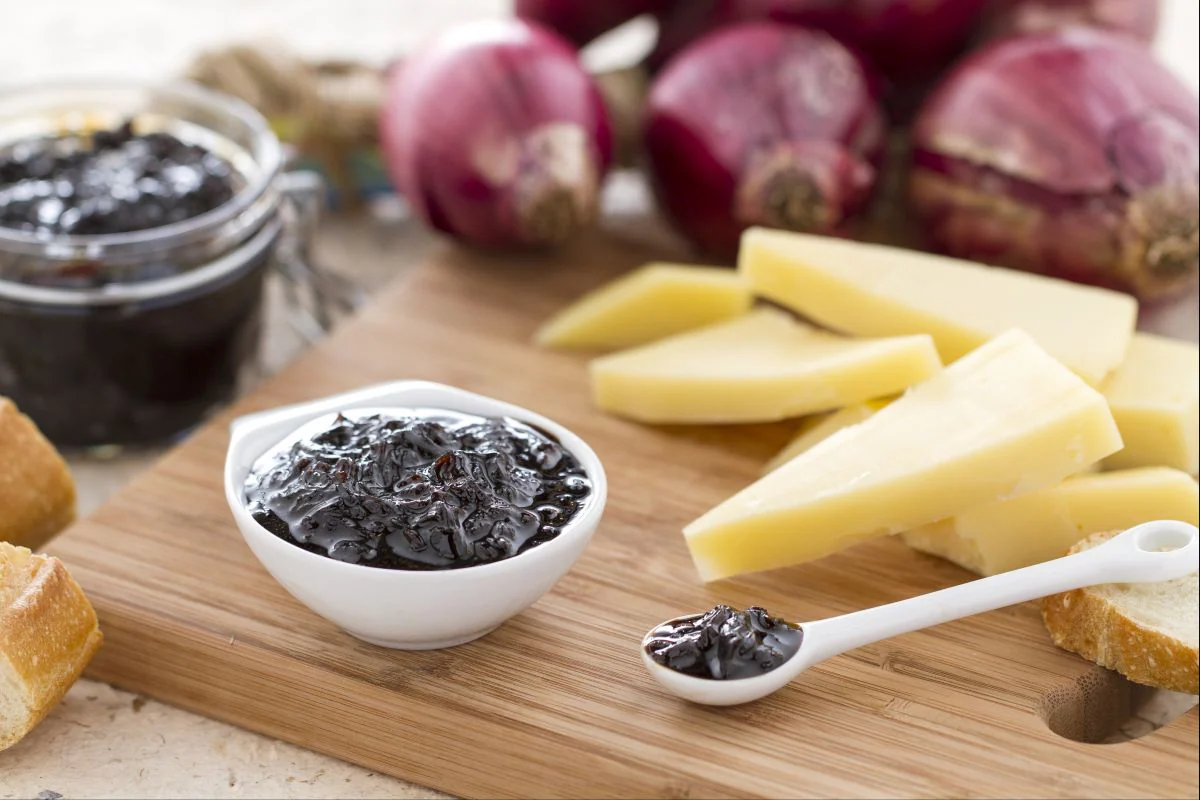Tropea Onion Jam
- Average
- 45 min
- Kcal 505

Composta di cipolle di Tropea al balsamico is a classic Italian dish from Calabria—and it’s just awesome. This region is known for its knack for turning simple, local ingredients into something super special. The cipolle di Tropea are famous for being sweet and tender, really a favorite in Calabrian kitchens. Slowly cooked with aceto balsamico and a hint of honey, these onions transform into a deliciously sweet and tangy compote. I mean, this mix is perfect. For real.
It pairs way way better with aged cheeses like pecorino or parmigiano, enhancing their flavors with its rich, almost jam-like quality. And look, this composta di cipolle isn’t just for cheese boards. It shines with pork roasts or roasted fish, adding a unique depth of flavor that makes these dishes pop. Spread it on toasted bread for an appetizer, and watch it vanish at parties as everyone falls in love with the mix of tender onions and tangy balsamic. So here's the thing: throughout Calabria, you’ll find variations of the ricetta cipolle di Tropea. Some go for a little extra honey for that added sweetness, while others favor more vinegar for a stronger tangy kick.
There are also similar dishes like marmellata di cipolle or caramelized cipolle rosse, which are pretty much equally popular for pairing with grilled meats or charcuterie. The versatility of this dish lets you add your personal touch. But the star? Definitely the special Tropea onions. Their golden hue and moist texture take any meal up a notch, making it feel a bit more special. Even if you’ve never tried a conserva di cipolle before, this Calabrian treat is a wonderful way to experience Italian cuisine—simple, tender ingredients, packed with flavor, perfect for sharing. Whether served as an appetizer or alongside your favorite dishes, this compote brings a real taste of Calabria right to your table.
You might also like:

To prepare the Tropea onion compote with balsamic, start by cleaning the onions: wash, trim, and slice the onions 1 (for this operation, we recommend using disposable gloves to avoid the onion smell on your hands). Take a saucepan, add the onions and balsamic vinegar 2, then let them soften for 10 minutes on low heat, stirring frequently 3.

When the onions are softened, add the honey 4 and sugar 5 and let cook for about 45 minutes on very low heat, continuing to stir often 6; check that the compote remains soft and does not tend to "caramelize." After the indicated time, check the cooking by performing the saucer test: pour a teaspoon of Tropea onion compote with balsamic on a tilted saucer, it will be ready if it does not tend to drip but remains rather compact and homogeneous; otherwise, let it cook a little longer.

Now take care of sanitizing the jars (7-8): follow the instructions of the Ministry of Health indicated at the end of the recipe. Jar the Tropea onion compote with balsamic, being careful to leave 1 inch of space from the top, then close the jars well. Once the compote is in the jars, seal and proceed to boiling, or pasteurization, always following the instructions of the ministerial guidelines. Finally, check that the vacuum has formed correctly: if you do NOT hear the "click clack" when pressing the lid, it means the vacuum was done correctly. Once ready, store the Tropea onion compote with balsamic in a cool, dry place and, when serving, put it in a bowl and accompany it with good aged cheese 9.